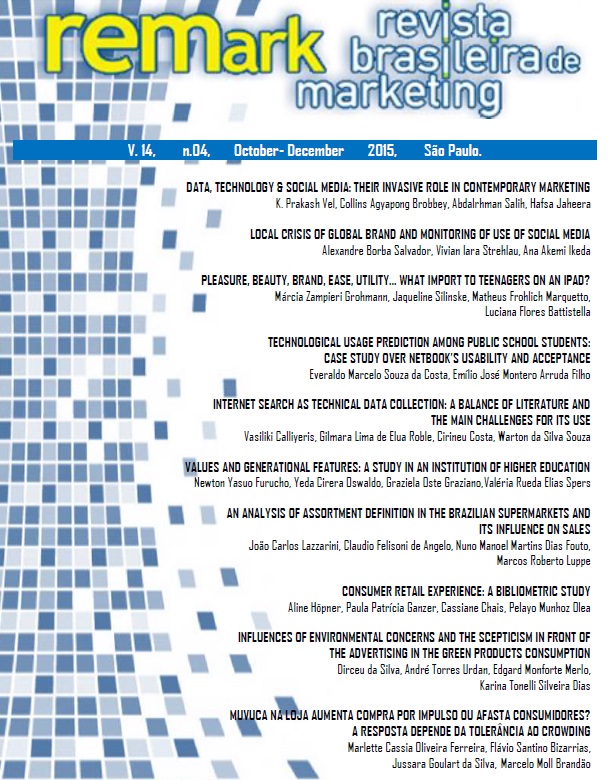Technological Usage Prediction among Public School Students: Case Study over Netbook’s Usability and Acceptance
DOI:
https://doi.org/10.5585/remark.v14i4.2942Keywords:
Usage Behavior, Quantitative Method, Educational Sector, Justification, Technological Convergence.Abstract
This work contemplates an analysis of period prior to delivery of the netbook, students from a public school in Belém-Pa. The objective is to verify the usability expectations of this technology for the same. The Technical chosen the purpose of this research was a survey, with online data collection and quantitative analysis, whose variables come from the marketing literature. Finally, let us reason together that students predict accept technological equipment, if it has similar technology to known by them, within hedonic values with utilitarian justifications of use.








